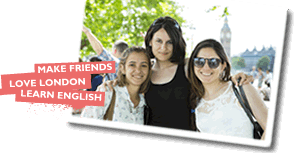Risk Assessments: ICE Full-day and Half-day excursions
Essential General Rules for staff
Though relevant to all ICE day trips, these rules have been written with the trips listed below in mind:
• Group leader and ICE representative must exchange mobile phone numbers.
• Emergency contact number must be given to group leaders for out of hours contact or during school hours.
• Maximum ratio of 1 group leader to 10 students.
• The ICE representative and the group leader must know the number of students in each group before departure and students should be regularly counted particularly in large crowds & before and after public transport.
• Group leaders must accompany group on excursion with ICE representative.
• ICE does not provide excursions for under-16s.
• Students meet at a pre-organised meeting point at an allotted time, usually at ICE.
• If there are students under the age of 18 on the trip, ICE representative must be in possession of an enhanced DBS check.
• Requirements of additional support or medical needs of participants must be checked before departure.
• ICE trips do not include activities considered dangerous or high risk.
• Check location, routes and modes of transport before leaving.
• Losing a student is perhaps the greatest risk on any excursion. So, a keen watchful eye must be kept on any student under the age of 18 and extra guidance shown. In addition, a meeting point in the event of anyone getting lost in crowds must be made on each trip.
• Ensure that all students have an underground map of London and contact details of their group leader, ICE representative and the ICE Emergency number.• All ICE representatives and group leaders must have a working mobile phone on their person during a trip.
For the following trips, an ICE representative has undertaken an exploratory visit to:
1. ensure at first hand that the venue is suitable to meet the aims and objectives of the excursion;
2. assess potential areas and levels of risk;
3. ensure that the venue can cater for the needs of the staff and participants in the group;
4. become familiar with the area before taking a group there.
For each trip, the following assessment has been made:
What are the hazards?
a. Getting lost in large crowds.
b. Falling in water if on a boat.
What safety measures need to be in place to reduce risks to a reasonable level?
a. Reminding students of ‘If I am Lost’ meeting point and procedure.
b. Explaining to all students the risks of getting on and off a boat.
What steps will be taken in an emergency?
Take student to nearest hospital if necessary. Ensure the means to pay for an emergency taxi are taken from ICE.
If required call Tim, Paula or Joanna, who have H&S training, for advice.
Seasonal conditions, weather and timing;
Wet or snowy weather will be slippery and hazardous. In the event of poor weather, the trip may be cancelled. In this event, consult with Tim before leaving.
1. South Bank - Nearest station: Waterloo
Walk to South Bank to see street performers
View of Thames, restaurants etc.
Millennium Bridge & view of St Paul’s Cathedral
Option of River boat to Greenwich for other half of full-day excursion.
Name of and distance to the
nearest hospital.
St Thomas’ http://goo.gl/maps/sC2nE
Westminster Bridge Road, Lambeth, SE1 7HY
020 7188 7188
2. Greenwich - Nearest station: Greenwich overground
• Greenwich Park
• Market & shops
• Maritime museum
• Tunnel under Thames
• Cutty Sark
Name of and distance to the
nearest hospital.
Queen Elizabeth
http://goo.gl/maps/2Q1jp
Stadium(Road,(Woolwich,(London(SE18(
4QH 020(8836(6000( ·(slh.nhs.uk
3. Hyde Park & Notting Hill – Notting Hill Station underground
• Notting Hill Station
• Portabello Rd
• Walk to Hyde Park
• Serpentine lake & gallery
Name of and distance to the
nearest hospital.
St Mary’s Hospital:
http://goo.gl/maps/CAozI
Praed(Street,(City(of(Westminster,(W2(1NY
020(3312(6666( ·(imperial.nhs.uk
4. Shopping in Oxford Street & Regent Street
Nearest station: Oxford Circus
Name of and distance to the
nearest hospital.
The Heart Hospital:
http://goo.gl/maps/38ZxF
16K18(Westmoreland(Street,(London(W1G(
8PH 114(ft(SE
020(3456(7898 ·(nhs.uk
5. Big Ben & Houses of Parliament
Nearest station: Westminster
Name of and distance to the
nearest hospital.
St Thomas’ http://goo.gl/maps/sC2nE
Westminster Bridge Road, Lambeth, SE1 7HY
020 7188 7188
6. Science Museum &/or Natural History Museum
Nearest station: South Kensington
Name of and distance to the
nearest hospital.
Chelsea & Westiminister: 369 Fulham Road,
London SW10 9NH
020 8746 8000
http://goo.gl/maps/oH0mj
7. Camden Market
Nearest Station: Camden Town
Name of and distance to the
nearest hospital.
University College Hospital 235 Euston Road
London, Greater London NW1 2BU
0845 155 5000 http://goo.gl/maps/PspKt
Before going on a group trip with students, ask yourself the following:
• What are the hazards?
• Who might be affected by them?
• What safety measures need to be in place to reduce risks to a reasonable level?
• Can the group leader ensure that the safety measures in place are adhered to?
• Can an assessment of the effectiveness of the safety measures and any proposed changes be made?
• What steps will be taken in an emergency?
• Location, routes and modes of transport; Composition of the group
• Additional support or medical needs of participants;
• Seasonal conditions, weather and timing;
• Communication arrangements
• Supervision ratios;
• Distance to the nearest hospital.
If the trip is to a place not on the list above, you must write a risk assessment
based on the criteria above for presentation to the Director of Studies before embarking.








